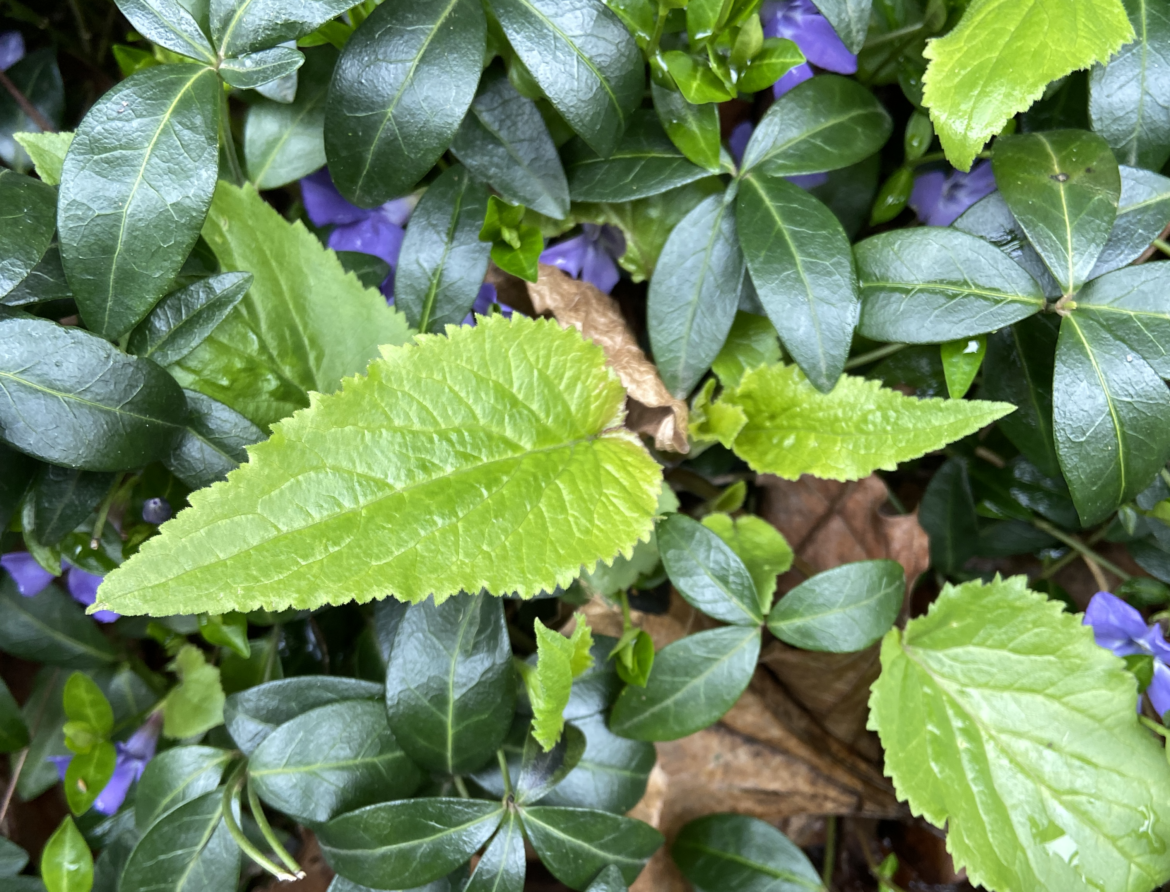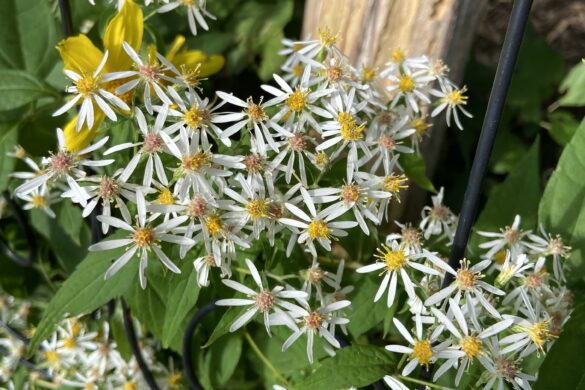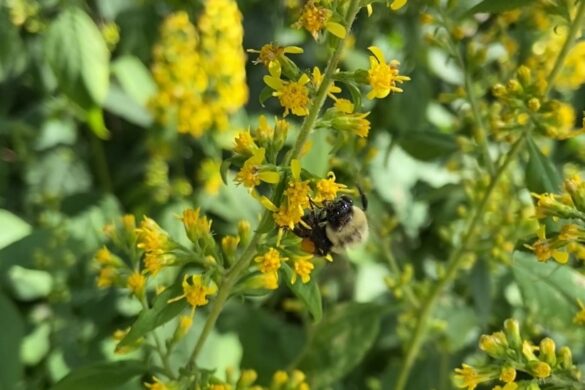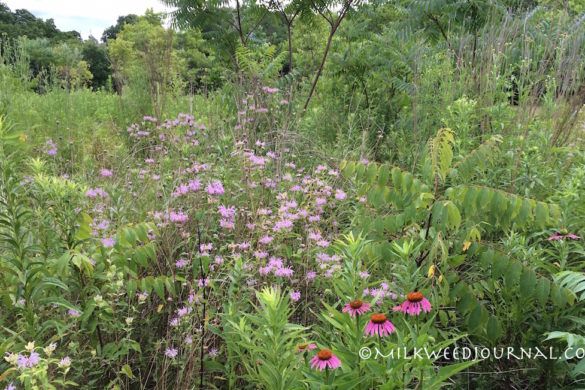Awareness the first step to controlling invasive plants
Once you know what they are, you’ll see them everywhere – along sidewalks, in roadside ditches, and in your garden too. They spread relentlessly and tenaciously by seed and underground root systems, crowding out other beneficial plants as they go.
I’m talking about invasive plants. Some, like periwinkle and goutweed, are still sold by gardens centres as “low maintenance” ground covers, with nary a mention about the work you’ll face keeping them from taking over your garden, and the damage they can do when they escape into natural areas.
Last weekend, I spent an afternoon removing the invasive plants that have crept into my garden: creeping bellflower, garlic mustard, creeping buttercup and the periwinkle that comes under the fence from my neighbour’s yard.
Creeping bellflower (aka hellflower)
Creeping bellflower (CBF) is among the worst of the lot for being hard to eradicate once it gets going. Don’t be lured by its purple flowers. Pop into one of the madly churning Facebook groups of aghast gardeners fighting a CBF tidal wave, and you’ll see what I mean.
The only way to deal with this plant is to get on it as soon as possible and dig way down (up to 2 feet down) to get the entire tuber root. It spreads by seed and lateral roots, so you have to watch for volunteers popping up many feet away and get them too. Even the tiniest bit of root system left behind can become a new plant, so this may well be an annual whack a mole exercise, but I think that with an early start and diligence there’s a chance to win the day.
(Creeping bellflower is pictured above (bright green leaves) amidst periwinkle.)
May 12-18 is National Invasive Species Action Week
CBF is one example of an invasive plant – and there are many. Here’s a quick overview:
The Invasive Species Centre defines invasive plants as “harmful non-native trees, shrubs, and herbaceous plants that invade forests and prevent native plants from growing. This can have negative impacts on how ecosystems function, on native vegetation, and native wildlife.”
Resources for gardeners
The Ontario Invasive Plants Council publishes a list of invasive plants to watch out for. This is not a complete list but it includes some of the worse offenders, like giant hogweed (the sap can burn your skin) and Japanese knotweed (the roots can crack foundations).
Then there’s phragmites, a reed from Eurasia that is taking over wetlands throughout North America. Many groups are engaged in the battle against this reed. See this advice on phragmites from the Nature Conservancy of Canada.
The Ontario’ government’s Gardeners action plan also has advice on stopping the spread of invasive plant species.
When removing invasive plants, be sure to put them into a black garbage back and leave it in the sun for several days, then dispose of in the municipal garbage (not in your compost bin!).
Grow Me Instead
The Ontario Invasive Plant Council publishes the popular Grow Me Instead guide that explains the invasive tendencies of common garden plants and suggests appropriate non-invasive alternatives.
Also see our Milkweed Journal list of 10 beautiful, beneficial Ontario native plants for a low-maintenance garden.
Invasive plants are a frustrating, dispiriting aspect of the gardening journey. However, we’re all in this together, and awareness is a first positive step, as is patience and persistence in trying to do what you can, day by day.
—–
Follow the conversation: #NISAW #ISAW #NISAW #InvasiveSpecies #InvasiveSpeciesControl #OntarioInvasives #InvasivePlantsOntario #StopTheSpread





